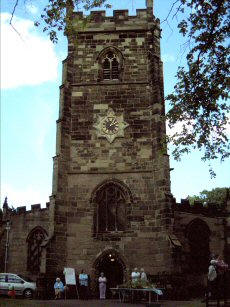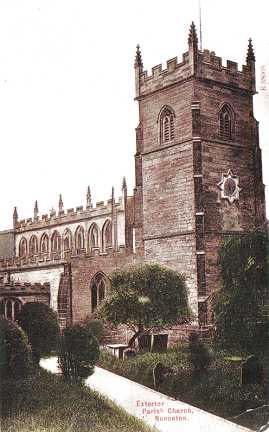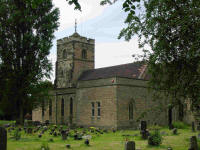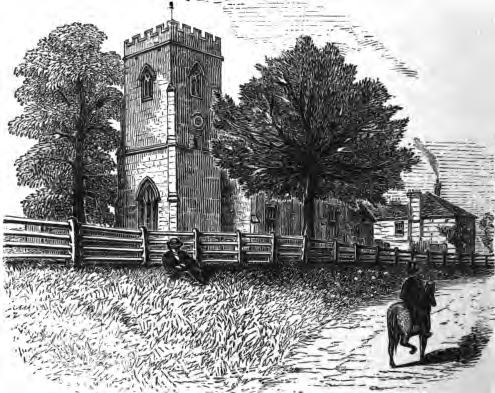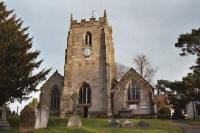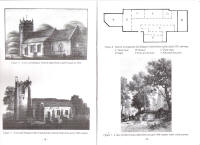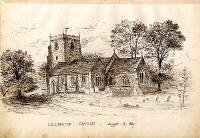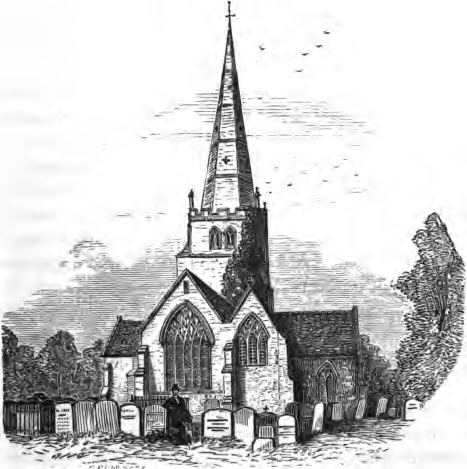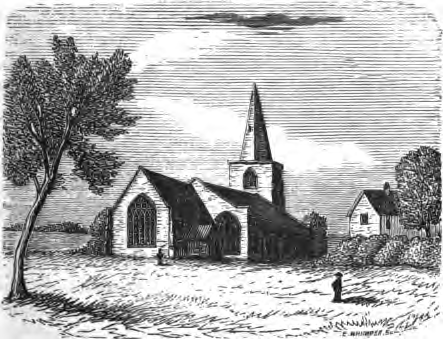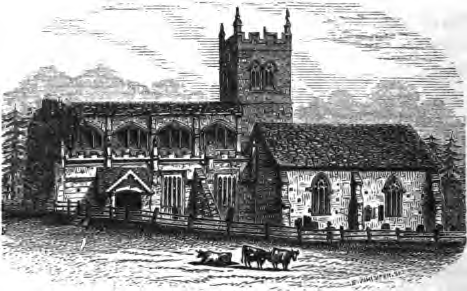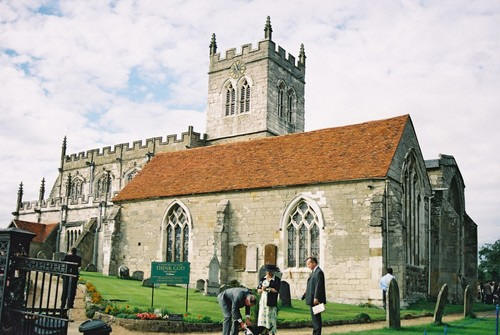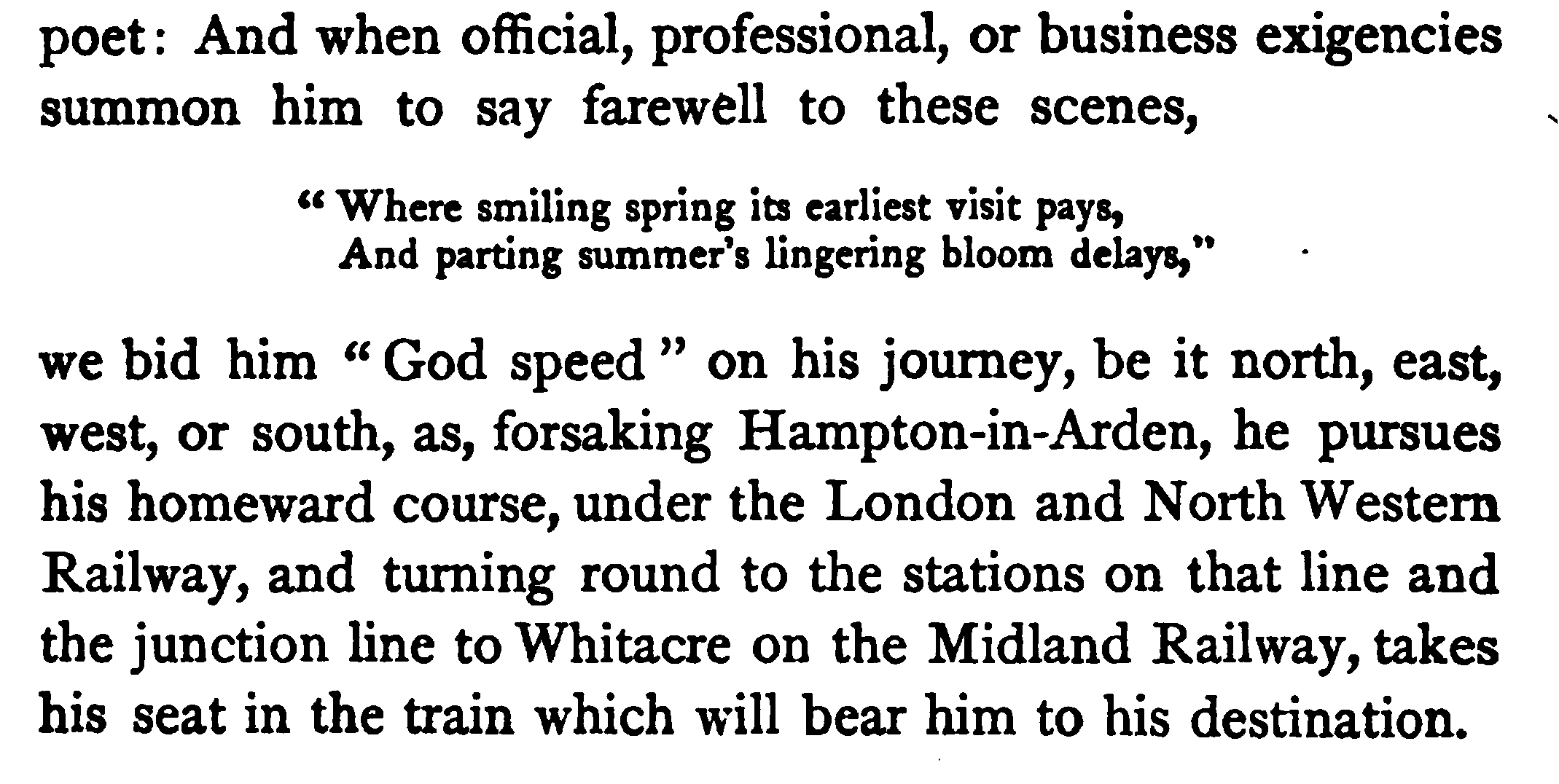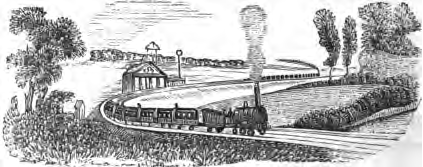
|
|
|
You will then need to navigate back to this page using the County Index |
|
Churches which still retain west gallery features or connections |
|||
| Ashow, dedication not known | A church with a fine mediaeval roof and good box-pews. | ||
| Astley, St Mary the Virgin | Rebuilt in 1608 from the 14th C. chancel of the old cruciform Collegiate church. Tower and chancel added. The 'nave' contains 18th C box-pews and Victorian benches. | ||
| Baginton, dedication not known | Late 18th C west gallery. No further details known. | ||
| Berkswell, St John the Baptist | Said to be the richest Norman church in the county, there is a vaulted crypt beneath the chance, extending into an octagonal bay under part of the nave. Black and white two storey timber porch, and an 18th C. south gallery. | ||
| Birmingham, Hall Green, Church of the Ascension |
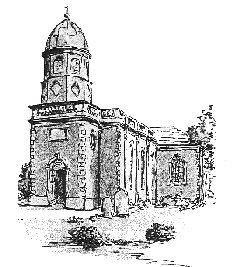 SP
18 SW 13/6 25.4.52
(formerly listed as Church of the
Holy Trinity under Hall Green).
Reasons for Listing as Grade 2*: Building dated 1704
and possibly by Sir William Wilson; altered. Red brick with
stone dressings. Of the C18 the
lower part of the projecting west tower and the nave,
3 bays long demarcated by giant Roman Doric pilasters
carrying an entablature and
balustrade. Arched windows in moulded stone surrounds with
impost blocks and keystones.
Quoins at the angles. In 1860 chancel and transepts were
added in the same style as the C18
work. Also probably of 1860 the
upper part of the tower with its
octagonal brick turret with copper cupola. Interior with
coved ceiling, simple C18 pulpit
and painted early C19 Royal Arms. [West
Gallery]. SP
18 SW 13/6 25.4.52
(formerly listed as Church of the
Holy Trinity under Hall Green).
Reasons for Listing as Grade 2*: Building dated 1704
and possibly by Sir William Wilson; altered. Red brick with
stone dressings. Of the C18 the
lower part of the projecting west tower and the nave,
3 bays long demarcated by giant Roman Doric pilasters
carrying an entablature and
balustrade. Arched windows in moulded stone surrounds with
impost blocks and keystones.
Quoins at the angles. In 1860 chancel and transepts were
added in the same style as the C18
work. Also probably of 1860 the
upper part of the tower with its
octagonal brick turret with copper cupola. Interior with
coved ceiling, simple C18 pulpit
and painted early C19 Royal Arms. [West
Gallery]. |
||
| Castle Bromwich, St Mary & St Margaret | The old Georgian brick village was bypassed by new roads in the early 1950s, and retains much of its original character. The church stands close by the old Elizabethan Hall, and is connected to it via a private path and iron gateway. The church, a brick-built oblong, dates from 1726-32, and encloses a mediaeval timber framed chapel. Its 18th C. fittings are exceptionally complete with box-pews throughout, a two-decker pulpit and wrought-iron altar rails. There is a tiny west gallery, supporting an equally small organ. | ||
| Compton Wynyates, No known dedication | Lord Northampton's private chapel. It dates from the Restoration, and was rebuilt in the old tradition after damage during the Civil War. Old materials were used, and the church has since escaped any further "restoration". There is a single arcade running down the centre of the church, with box-pews either side. There is no chancel as such, and the pulpit is half-way down the south side of the church. | ||
| Haeley, St Mary | The church dates from the late-mediaeval period, and contains box-pews. | ||
| Hillmorton, St John the Baptist | The church has an 18th C. west gallery, which contains the original barrel organ, dating from c. 1825. Constructed as a barrel and finger organ by J C Bishop, the organ remains playable but the barrel part isn't. (Kevin Downham - organist) | ||
| Honiley, St John the Baptist | The church dates from and is built in the Classical style. The west gallery is on marble columns. Box-pews. | ||
| Idlicote, St James | The church is Norman, Early English, with later additions. The arcade in the south chapel is 18th C., there is a timber bell-cote, box-pews, two-decker pulpit with tester and separate reading desk, Jacobean screen, and a west gallery. (CEPC)(No ref. in Pevsner.) | ||
| Loxley, St Nicholas | The church was consecrated in 1286, but this small church was almost entirely rebuilt in the 18th C. There are box-pews, and the pulpit is high up on the wall and approached from the vestry. Altar rails and clear glass. (CEPC) | ||
| Maxstoke, dedication not known | The west gallery here is 18th C. (No ref. in Pevsner.) | ||
| Nuneaton, St Nicholas |
The church stands amid clipped yews
in the churchyard, and dates from the 13th and 15th C. The early 18th C. North
and South galleries, with their 18th c.
fronts, survived until 1965, although the west gallery
still survives.
|
||
| Preston-on-Stour, The Blessed Virgin Mary | Partly rebuilt by Edward Woodward of Chipping Camden for James West (the antiquary) in 1752-64, this church is also set about by yews in the churchyard, 'sublime melancholy' being in fashion at that time. The interior copies the same idea with much 17th and 18th C glass in the windows, the theme being the 'universal dominion of death'. There are also several monuments with the same theme. There is also a west gallery, but no further details are known. | ||
| Stoneleigh-in-Arden, St Mary | The church has a Norman chancel arch and font, and contains box-pews and a tall pulpit dating from 1821. The west gallery has been quoted as 18th century (Pevsner gives it as early 19th C) and is raked. It can be seen through the side windows of the church and stands on eight iron columns; large Royal Coat of Arms front centre. The organ, which stands in its centre, also dates from 1821. | ||
| where?!!! | The church has Laudian fittings from Worcester Cathedral. The south gallery is 18th C, and, exceptionally, a Victorian north gallery. | ||
| Wellesbourne Hastings, St Peter | Gallery above tower arch, for musicians. (Short church guide) See below | ||
| Wotton Wawen, St Peter | The church in 1958 was described as completely unspoiled. Originally a Saxon church, the tower dates from the 11th C., and since then many additions have been made over the succeeding years. The church gives the impression of being three churches in one. There is an 18th C. west gallery, its front supported on two columns. | ||
|
Churches which are known to have had west gallery features or connections |
|||
| Aston Cantlow | it is known that a padlocked gate had to be erected at the bottom of the staircase leading to the west gallery in order to keep out unauthorised people. | ||
| Baddesley Clinton, St James |
The
Forest of Arden, its Towns, Villages and Hamlets, by John
Hannett, 1863: " . . . The interior has been much neglected
for years, [and presents an unenviable contrast to the last
church visit]. The pews, with their once-carved panelling, are
fast falling to pieces, for want of timely repair; whilst a
rickety gallery, with rough old stools for seats, appears
destined to fall down from the same cause. A few ancient oak
benches remain."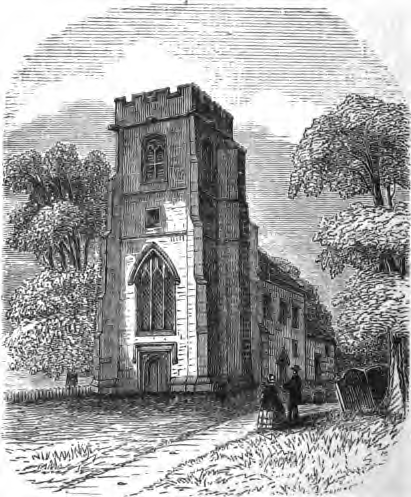 |
||
| Lower Brailes, St George | Built of local red sandstone this church was extensively rebuilt in 1649 after damage caused by the the quartering of Royalist troops there. There was once a west gallery immediately in front of the tower arch. | ||
| Chilvers Coton, dedication not known |
According to Gordon Maxwell in
The Author's Thames, 1924, there was a west gallery with an outside
staircase leading to it. In George Eliot's Scenes From Clerical Life Chilvers Coton is given the name of Shepperton Church. Nothing remains of historical Chilvers Coton except the church and that was largely rebuilt post war by German ex POW following extensive bomb damage. (There was a POW camp on the adjacent Arbury estate). |
||
| Claverdon, St Michael |
The
Forest of Arden, its Towns, Villages and Hamlets, by John
Hannett, 1863: " . . . an edifice, almost new, and in no very
good architectural taste . . . " "The nave was pulled down in 1830 . . . A gallery. containing a small organ, runs on the south and west sides."
|
||
| Fenny Compton, St Peter and St Clare | Some time during the 17th century the west end was sealed by the bricking up of the tower arch, and a gallery was built across the west end of the nave. Access was maintained to the base of the tower and the gallery by the construction of a small door which was cut through the west side of the tower. The 1879 "Restoration" probably put an end to it. | ||
| Lapworth, St Matthew |
Before 1863
the church was pewed with
a gallery at the west end of the nave. According
to The Forest of Arden, its Towns, Villages and
Hamlets, by John Hannett, 1863: "It is in contemplation,
however, to restore the interior so as to correspond with the
chancel".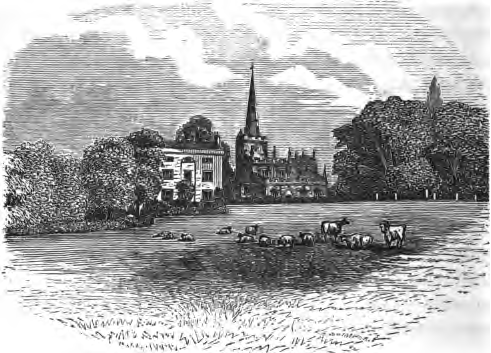 |
||
| Lillington, St Mary Magdalene |
The first box
pews are documented as appearing in the church as early as
1699, but from documents produced in 1811 by the then Vicar
(who was also Lord of the Manor and Patron of the living)
which must have included a plan, it would appear that what was
probably quite a chaotic arrangement such pews had been tidied
up, to the extent that provision had been made for all the
better off families and their servants. . . . There is also
evidence from the drawing of 1811 that worship was in
the style of the period, with heavy emphasis on the services
of the word, because the only item of furniture other than
pews and benches is a three decker pulpit. A
gallery was put up in 1827 to ease overcrowding, but in 1847
the box pews were largely removed to provide even more room
for increased seating capacity. [The Story of
Lillington Church, by the Rev'd Dennis C Brown 1999]
Pictures
taken from the Church Guide - see above. Click to enlarge.
That at the lower left shows the gallery window in the
roof, situated over the porch, see sketch of church in 1867. |
||
| Long Compton, St Peter and St Paul | |||
| Loxley, St Nicholas | 13th Century church, almost entirely rebuilt in the 18th century, the tower alone remaining unaltered. Box-pews and Georgian altar rails, round-headed windows and plain glass. | ||
| Nuneaton, St Nicholas |
The early 18th C galleries were
removed in 1965.
The pews were installed in 1853 when the church underwent drastic alterations. They were originally box pews complete with partitions and doors but were updated in the restoration of 1965. Also at this time the galleries were removed. The north Gallery had been installed in 1765 and the south gallery in 1790. Until 1882 all pews in the church were rented with the exception of a Few free ones for the poor. The seats in the galleries were sold by auction. The first organ was installed under the tower in 1813 and to celebrate the event an organ recital was given for which an admission fee of one-shilling (five pence) was charged.
|
||
| Oldberrow, St Mary |
Church
rebuilt c. 1875, but before that date was, according to
The Forest of Arden, its Towns, Villages and Hamlets,
by John Hannett, 1863: "[a simple church consisting of] a
nave, chancel , tower and timber built south porch. Tower
timber framed, and resting on beams thrown across some solid
masonry, part of the former stone tower.. . . interior no
special features, except chancel roof distinguished from nave
by a slightly higher ceiling. . . Church was . . . re-pewed in
1698. Two only of the old seats remain. A small gallery has
been erected at the west end, over which an unsightly dormer
has been erected . . .3 bells."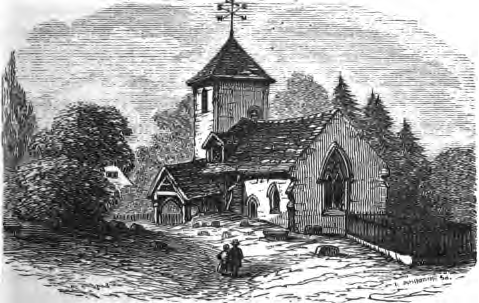 William Holyoake, Rector 1725-1769, frequently mentioned in Lady Luxborough's letters. She lived a short distance away at Barrells House. Holyoake had purchased the advowson from Robert Foley in 1705, who in turn had received it from the Knightley family. |
||
| Oxhill, St Lawrence | 12th C church and chancel, altered and restored by Bodley in 1856 and again in 1876-78. Gallery and box-pews removed in 1876. | ||
| Rowington, St Lawrence |
The
Forest of Arden, its Towns, Villages and Hamlets, by
John Hannett, 1863: " . . . There is a gallery containing an
organ at an the west tower end of the nave . . . but the
principle part of the church is fitted out with high pews.
On many of which the initials of the owners are cut or
printed."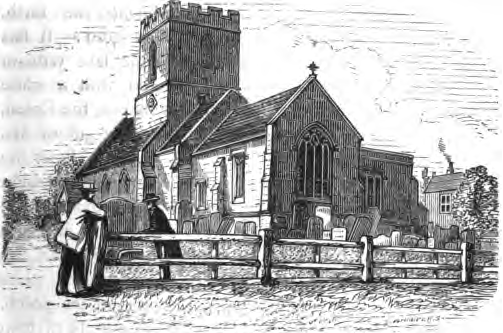 |
||
| Solihul, St Alphege |
|
||
| Studley, St Mary the Virgin |
West
Gallery erected in 1727, but pulled down in 1888 at which
time a pipe organ was installed. The marks in the wall at
the west end of the church can still be seen where the
galley would have been. The Forest of Arden, its Towns, Villages and Hamlets, by John Hannett, 1863: " . . . roof, wall, seats and galleries are plastered, coloured and painted so well as to effectually hide the characteristics of the original building . . ." 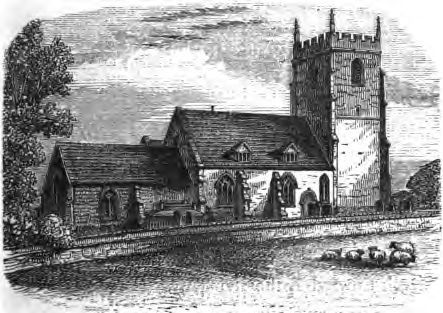 |
||
| Tanworth, St Mary Magdalene |
Two old
porch doorways were walled up and small windows inserted
into the previous apertures. New doorways were cut into the
original tower walls so as to gain entry to the church
immediately underneath the new west gallery. In The
Forest of Arden, its Towns, Villages and Hamlets, by
John Hannett, 1863, he comments: "1790 - havoc wreaked by
the Solons of the parish [wise and respected lawmakers - ie
the Vestry Meeting], who in Vestry assembled on November 17,
1789, resolved 'that the Church should be new pewed in a
regular way, so as to be fit and decent for divine
service'. as a result, he continues: '. . .[they had]
removed the several roofs [of the church], destroyed pillars
and arches separating the nave from the north aisle and
removed the porches. [They] created one roof span over the
entire church, separated the tower arch from the body of the
church by the erection of a large gallery, with closed
screen under, pewed the body of the church without any
central passageway to the chancel . . . much more like a
concert hall [with a flat-roofed ceiling].'
He was
decidedly put out by the work which had been carried out,
calling what the Vestry meeting saw as fit and decent
an act of barbarism! |
||
| Ullenhall, St Mary |
The
Forest of Arden, its Towns, Villages and Hamlets, by
John Hannett, 1863: " . . . and the chapel seated in high
pews, those in the chancel being nearly five feet high.
These, with the unsightly gallery, and the two dormer
windows in the roof of the nave completely spoil the
appearance of what might be made a very neat place of
worship". He goes on to comment " The old communion
rails, are modern, bearing the date 1820, the old ones, in
the style found in many churches in the neighbourhood, being
used as a balustrade to the stairs of the gallery at the
west end."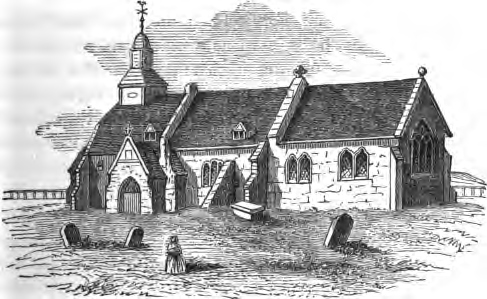 |
||
| Welford on Avon, St Peter | At one time, members of the west gallery quire were joined by singers from the local non-conformist chapel, but eventually they were asked to leave by the vicar, as they were not members of his church. This obviously was before the church was rebuilt by to the design of Sir Gilbert Scott in 1866. The parish was transferred from Gloucestershire to Warwickshire in 1931. | ||
| Wellesbourne Hastings, St Peter |
Previously galleries on three sides of the church - said to
be "unsightly". Removed when church
renovated in 1847-48. (Short church guide)
See above |
||
| Whatcote St |
Extensive bomb damage in 1940, restored ?1948-50. Jacobean pulpit, now without its original tester. |
||
| Whichford St Michael | |||
| Wootten Wawen, St Peter |
The Forest of Arden, its Towns, Villages and Hamlets, by John Hannett, 1863: " . . .and the [south] chapel seated in high pews, those in the chancel being nearly five feet high. These, with the unsightly gallery, and the two dormer windows in the roof of the nave [which lit the gallery] completely spoil the appearance of what might be made a very neat place of worship. The old communion rails are modern, bearing the date 1820, the old ones, in the style found in many churches in the neighbourhood being used as a balustrade to the stairs of the gallery at the west end." Against the west wall of the nave is some early18th-century panelling, a dado 5 ft. 2 in. high with fielded panels and a moulded top-rail. Also two fluted shafts on square pedestals and an oak entablature with a dentilled cornice, probably a former gallery front set back to the wall. (British History on Line).
|
||
|
1863 |
|||
|
Other churches |
|||
| Long Compton, dedication not known | Good News!! - New Meeting rooms which are to be built at the west end of the church are also planned to have a new west gallery, complete with seating. (2002) | ||
| Asterisks denote churches in preparation | |||
|
|
